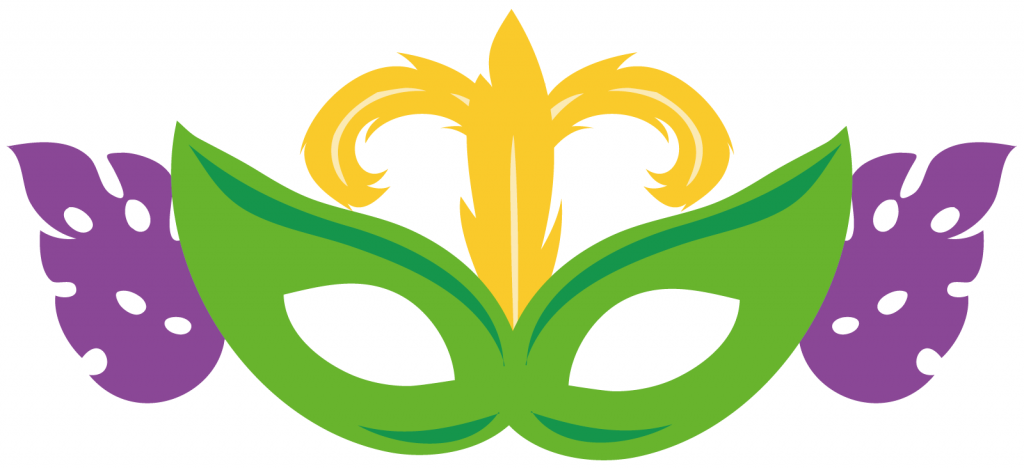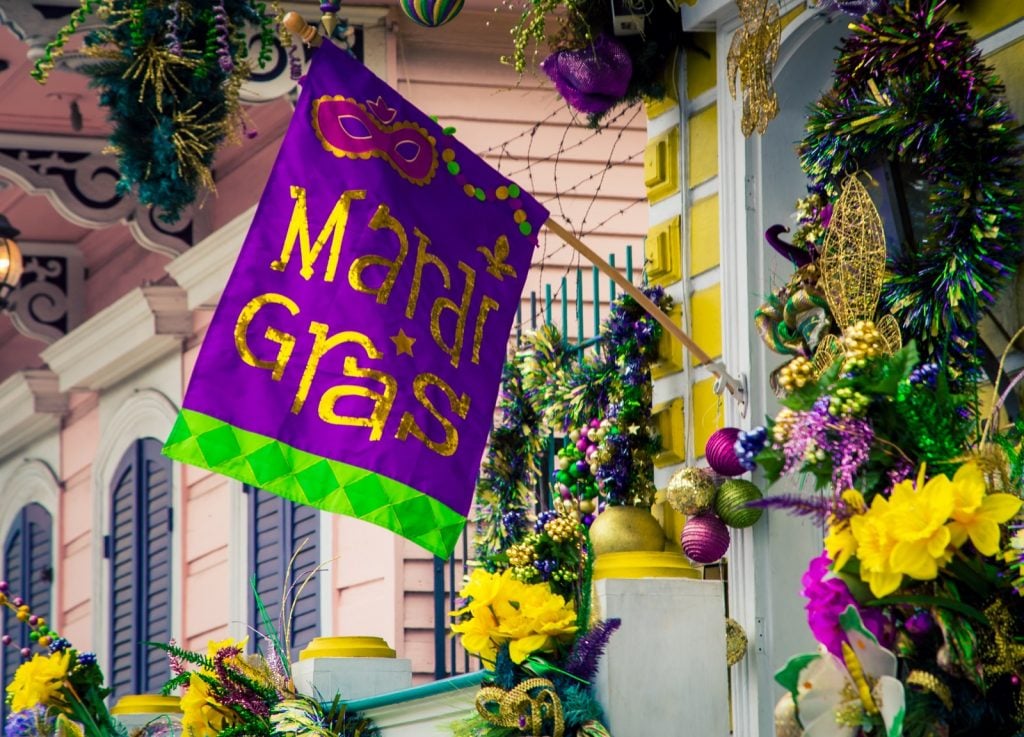What Do the Colors in Mardi Gras Mean

Mardi Gras, or Fat Tuesday, is an exciting time in New Orleans, Louisiana, that occurs every year. It's a carnival packed with beautiful colors, lights, people, food, and more that would leave an impression on anyone for a lifetime. It's no wonder that millions visit to participate in the festivities every year.
However, there are mysteries to the thrilling carnival, such as the meaning of its three most prominent colors: purple, green, and gold. Why would creators of the Mardi Gras carnival choose these colors? Is there more to Mardi Gras than just a huge parade?
Let's explore the origins and meaning of these three colors that shape the exhilarating spirit of Mardi Gras.
Origins of the Mardi Gras Colors

The colors of Mardi Gras – purple, green, and gold, can be found as early as 1872 at a carnival organized by the company Rex for a Russian aristocrat's arrival. Rex has held parades in New Orleans for 148 years and continues to be its most prominent parade organizer to date.
Rex, which is "king" in Latin, prepared the carnival for New Orleans citizens and draped balconies with the three infamous colors. Oddly enough, historians are unsure why Rex clothed the city with these colors, but there are some clues to why this may have happened.
For one, newspapers in 1872 proclaimed Rex to be the "King of the Carnival" and cites that the Rex founders wanted the colors purple, green, and gold everywhere. There was no explanation in the paper, however, as to why these specific colors were chosen. With some more digging, writer Errol Laborde discovered that Rex founders believed "a king must have a kingdom, and a kingdom must have a flag."

The flags of Britain, the United States, and France all have tricolor flags, thus explaining why they used three colors instead of only two or one.
Royal purple was already a choice that seemed obvious, but heraldry calls for both metals and colors. For metals, gold with its symbolism for kings and kingdoms also made it an easy choice.
Lastly, when looking at the colors acceptable for a coat of arms, only five colors were appropriate: red, blue, purple, green, and black. They chose green.
Now that we've gathered why they may have chosen these colors, what do these colors mean?
Purple is the Color of Justice

When civilizations were developing, so did clothing and the creation of purple dye. It turns out the extraction of the color purple from 12,000 shellfish could barely cover the size of a Roman toga. It may explain why only the most privileged individuals centuries ago wore purple.
The most influential people in kingdoms wore purple as well, especially kings and queens. Purple is a combination of the strength of red and blue. For hundreds of years, purple has been associated with luxury, nobility, wealth, and extravagance. It also represents wisdom, creativity, independence, mystery, and magic.
Interestingly enough, purple is the most dominant rainbow wavelength, meaning its strength goes beyond symbolism. This phenomenon may explain why purple is associated with the supernatural and the cosmos.
In heraldry, purple links to regal, sovereignty, and justice, which explains why the organizers of the Mardi Gras carnival chose purple.
Green is the Color of Faith

Since the dawn of time, green has been a prominent color with various meanings. Whether it was the color of nature, vegetation, or being lucky, green is more than just a color. It represents freshness, harmony, and growth. Green also suggests endurance and stability.
Countries worldwide use green to symbolize their people, such as green being the "holy color" in Muslim nations like Pakistan. The luck of the Irish comes with lots of green, especially on St. Patrick's day.
Green does have a materialistic side, but it can also be a calming color. For instance, darker or dull greens are associated with money and the financial world. Yet, emotionally, green corresponds with safety.
Also, green can be associated with envy or nausea, but then there is emerald green, which gives off a luxurious feeling, similar to the color jade in Asian countries. All this means is that green is a highly versatile color.
In heraldry, green means faith and loyalty in love, which is the main focus of the Mardi Gras color symbolism.
Gold is the Color of Power

Often, kingdoms drenched themselves in gold to show their power, without being shy about it.
Kings and queens notably wore gold, especially gold crowns mixed with various colors, including purple, giving the message that they were the strongest in the kingdom. Golden jewelry can also be seen as a status symbol, as it's one of the most expensive metals in the world.
Whether it was from Ancient Egypt or Hinduism in India, deities worldwide were depicted in a yellow variation, similar to gold. In the golden calf story, a Bible story during Moses's times where idolatry was rampant, rebels used gold to create structures of their gods. People worshipped them, further establishing that gold represented authority.
In heraldry, gold means power, wisdom, wealth, prestige, and high quality, making it a top choice for Mardi Gras. It is fitting that Rex, dubbed the "King of the Carnival," use gold to represent their parades.
Final Thoughts

Mardi Gras is a fantastic carnival that dates back more than a century, with mysterious origins and exciting experiences.
It turns out that the trifecta of colors chosen to represent Mardi Gras comes from heraldry, where kingdoms chose colors based on their symbolism for their coat of arms or flags.
Ultimately, they chose purple, green, and gold to symbolize justice, faith, and power. These three colors decorate the city of New Orleans every year, bringing an atmosphere like no other, thanks to what these colors represent.
In conclusion, Mardi Gras is more than just a parade. It's a celebration that embodies what these colors signify to the city and the carnival for millions to enjoy.
What Do the Colors in Mardi Gras Mean
Source: https://www.color-meanings.com/mardi-gras-colors-meanings-purple-green-gold/